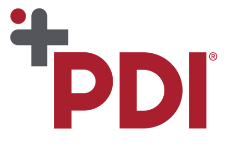Understanding ‘Contact Time’ and why it’s so important in the disinfection process

Our expert, Sarah Ashmore, discusses what contact time is and the critical role it has to play in the cleaning and disinfection process.
Disinfection has always been important to prevent the spread of infections. Still, it has become even more critical today due to the ongoing spread of Norovirus and the rise of other infectious diseases. For instance, the virus that causes Norovirus is highly contagious and can be transmitted through contact with contaminated surfaces or inhaling contaminated air.
When properly performed, disinfection can help to reduce the number of microorganisms present on surfaces, objects, and in the air – and therefore plays a crucial role in preventing the spread of these diseases. Sometimes called “dwell time,” ‘Contact Time’ plays an important part of the disinfection process. But what exactly does it mean?
What is contact time?
To disinfect correctly, we need to understand what contact time is and why it is important when disinfecting surfaces, which play an important role in indirect transmission of infection, particularly in healthcare settings. Many potentially infectious bacteria – including E. Coli and MRSA – viruses, yeasts and moulds can survive on surfaces for considerable amounts of time. One of the most critical factors to consider when choosing a disinfectant is its ‘contact time’. Contact time is defined by how long a disinfectant must stay wet on a surface to do its job effectively. It can range widely, from as few as 15 seconds for commonly used hand sanitisers to 30 minutes for chlorine oxides used in laboratories. This is listed on the product label.
Why is contact time important?
Contact time is important because it tells us how long the surface needs to remain visibly wet to kill all of the microorganisms listed on the label effectively. It ensures that the surface has been thoroughly cleaned and disinfected to help prevent infections from spreading. It also informs others that if the product has been used on a surface, such as a bed, it has been cleaned to the European Norms (EN) standard testing (the highest standards) and is safe to be used by the next user.
How do you properly clean and disinfect a surface?
To prevent risks of transmission, all surfaces should be subject to a thorough cleaning and disinfection routine, especially when known pathogens are present. If a surface has visible soiling, such as dirt, blood, or fluids, this would be classed as dirty. One wipe should be used to clean the visible soiling, then disposed of before using a second wipe to disinfect the surface. When cleaning, it is important to always leave a surface to air dry because intervening manually could compromise the disinfectant wipe’s overall efficacy. Where the temperature is warmer or has a higher level of humidity, the visibly ‘wet period’ (contact time) may be shorter. An additional wipe may be needed to achieve the contact time in these cases.
Where to find the contact time on our products?
Across all our Sani-Cloth® 2-in-1 cleaning and disinfection wipes, there is an icon which indicates a contact time. This is the total contact time required to kill all the pathogens listed on the efficacy data table which appears on the reverse. Indicating the total contact time clearly on the front of the packaging means that busy healthcare professionals don’t have to spend time trying to find the relevant test method, pathogen and contact time, thus improving efficiencies and providing peace of mind that the correct contact time is being adhered to.
In addition, each product has efficacy data on its label to highlight the contact time for each pathogen with its correlating test method. The European Norms (EN) in relation to disinfectants are the ‘gold standard’ tests, and the testing methods are orientated towards the practical use of the disinfecting product.[1]

Efficacy Table for Super Sani-Cloth®
Looking at our Super Sani-Cloth®, for instance – ideal for cleaning and disinfecting in environments that require short contact times – the efficacy data highlights that the product has been tested against Norovirus via test standard EN14476. The total contact time is 1 minute in clean conditions and 1 minute in dirty conditions. Therefore, the surface must be visibly wet for 1 minute to ensure it has been disinfected against Norovirus. Some tests will show a quicker contact time in clean conditions because the surface is not classed as ‘dirty’; therefore, the contact time will be less!
And one last thing; always leave the surface to air dry. Do not intervene manually, or dry with paper towels as this could potentially compromise the overall efficacy of the disinfectant wipe.
If you’d like to discover our full range of two-in-one cleaning & disinfection solutions, visit: HC Products Archive – PDI International (elcap-dev.co.uk)
[1] Disinfectant standards: what you need to know (clinicalservicesjournal.com) – pg 51
Latest News
View AllPDI International celebrates its fourth Be the Difference® Day
PDI International Showcases Award-Winning Layered Approach to Tackle HAIs at Infection Prevention & Control Conference
